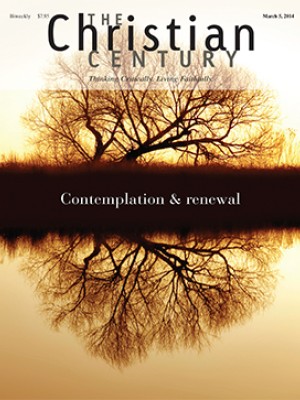Vivaldi's business plan

In the U.S., everyone thinks St. Martin-in-the-Fields is an orchestra. In the United Kingdom, everyone thinks it’s a homeless shelter. The Academy of St. Martin-in-the-Fields is over 50 years old and St. Martin’s today, with 350 concerts a year, offers the fullest concert program in the U.K. Meanwhile the Connection at St. Martin-in-the-Fields is the busiest homeless day center in the country. Underneath, in the crypt, the church runs a thriving café and shop. The church’s commercial operations have made it a substantial employer and centre of hospitality.
What do these three parts of the church’s life have in common, and how do they embody the congregation’s vision?
When I lived for seven years in North Carolina, I heard a radio show every Sunday morning as I was leaving the house. “Did you know,” a gravelly and inviting voice would say, “that a great many of the classical pieces we love to listen to had religious origins?” As I occasionally heard in the South, “How ’bout that!” Or, as we used to say growing up in the west of England, “Well I never!”
Read our latest issue or browse back issues.
The show was called “Great Sacred Music.” It inspired me to try something similar at St. Martin’s. Combining the appeal of a concert with the ambience of a worship service, we’ve evolved a hybrid event that takes place every Thursday and attracts a regular crowd of 150 people. Ten choral scholars sing a collection of accessible classical music. I intersperse comments about the theology, context, and significance of each item, along with periods of reflection and a couple of congregational hymns.
One Thursday we presented Vivaldi’s Magnificat. We at St. Martin’s are indebted to Vivaldi because his Four Seasons is our biggest moneymaker. We perform it around 20 times a year, and the visitors, especially the tourists, love it. But it turns out there’s more to Vivaldi than the rites of spring. This composer, who lived from 1678 to 1741, was also a Catholic priest and a violinist and spent most of his life in Venice.
This is where it gets interesting. How did Vivaldi earn a living? When he wrote his Magnificat he was working as choirmaster at the Pietà, a charitable home for foundlings. Yes, the orphanage had the acclaim of being home to Vivaldi. But there’s another story. The orphanage funded its work with a fascinating and brilliant business model: it trained the orphans to sing for their supper. Vivaldi’s job was to compose pieces of music for this choir to sing and thus attract a wealthy congregation that would support and finance the institution through its donations and bequests. And there’s another dimension: Catholic Europe did not countenance mixed church choirs in the early 18th century. The boys were not a part of the choir. They left the orphanage and entered apprenticeships, while the girls stayed to constitute the choir. If you look at the score of the Magnificat, you’ll see that the vocal bass parts are pitched high enough to be sung by an all-female choir.
Then if you look from the score of the music to the words of the canticle, you realize the significance of what Vivaldi was doing: he was taking lower-class young girls, with no hopes, prospects, or protectors, giving them a song to sing, and offering them a chance to bring about their own redemption and the liberation of others like them. They were truly singing Mary’s song. Through them the Holy Spirit was exalting the humble and meek and sending the rich away a good deal emptier. They were incubating the gospel of transformation just as Mary, in her womb, was incubating the word of God.
It’s a model that’s been replicated elsewhere. Thirty years ago the African Children’s Choir began training orphans from Sudan, Uganda, Kenya, Rwanda, and elsewhere to sing, and over three decades the organization has taken the groups on countless tours and raised large sums to finance orphanages, schools, and other institutions.
Notice the ways this business model marks out the Pietà and its imitators as a dynamic form of social enterprise. It doesn’t depend on pity; it doesn’t begin with scarcity. It starts with people’s talents and promise, not their neediness and suffering. It doesn’t assume that the people with money have the answers and the solutions while the people without money have the problems and the tragedy. It is a philosophy of abundance. But neither is it naive: the children are not the finished article—they need training, like anyone else. And they need to sing really good music so that people come to hear lively music, not to patronize the poor. But in learning to be a choir the children learn the skills to be a human being: partnership, discipline, teamwork, training—and, yes, business sense and entrepreneurial imagination.
St. Martin-in-the-Fields sits amid an unusual convergence of cultural, charitable, and commercial cultures. In Antonio Vivaldi we seem to have hit upon an individual who embodied all three—while at the same time being a priest. He really did have a vision of how to harmonize those sometimes discordant melodies and thus sing Mary’s song today. I wonder whether we can too.
The print version of this article omitted two sentences in the first paragraph.






